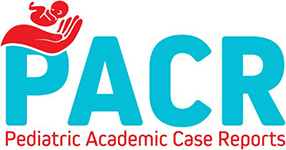Congenital Corrected Transposition of the Great Arteries (ccTGA): An Incidental Case Report
Sümeyye Uzkan1 , Muhammet Furkan Korkmaz1
, Muhammet Furkan Korkmaz1 , Hakan Altın2
, Hakan Altın2
1University Of Health Sciences, Bursa Faculty Of Medicine, City Training And Research Hospital, Pediatrics, Bursa, Türkiye
2University Of Health Sciences, Bursa Faculty Of Medicine, City Training And Research Hospital, Pediatric Cardiology, Bursa, Türkiye
Keywords: echocardiography, congenital corrected transposition of the great arteries (ccTGA), children
Abstract
Congenital corrected transposition of the great arteries (ccTGA) is a rare disorder with variable cardiac malformations that can result in a wide range of clinical outcomes, from asymptomatic to mortality. In ccTGA cases, the right atrium is connected to the left ventricle by the mitral valve, and this structure is supported by the pulmonary artery. After opening into the left atrium, the pulmonary veins are connected to the right ventricle by the tricuspid valve, and this structure continues with the aorta. As a result, systemic venous blood with low oxygenity goes to the lungs through the pulmonary artery and blood with high oxygenity from the pulmonary veins goes to the systemic circulation through the aorta and cyanosis is not seen. Although most cases are clinically asymptomatic in childhood, findings are more common in late adolescence and adulthood in the presence of additional lesions, such as ventricular septal defect or Ebstein anomaly. Bradycardia (with or without heart failure), complete AV block, tachyarrhythmia and congestive heart failure may be present. In addition, in later years, heart failure may develop and patients may die because the structure that functions as a pump to the systemic circulation is in the right ventricular musculature.
Cite this article as: Uzkan S, Korkmaz MF, Altın H. Congenital Corrected Transposition of the Great Arteries (ccTGA): An Incidental Case Report. Pediatr Acad Case Rep. 2025;4(1):1-4.
The parents’ of this patient consent was obtained for this study.
The authors declared no conflicts of interest with respect to authorship and/or publication of the article.
The authors received no financial support for the research and/or publication of this article.

